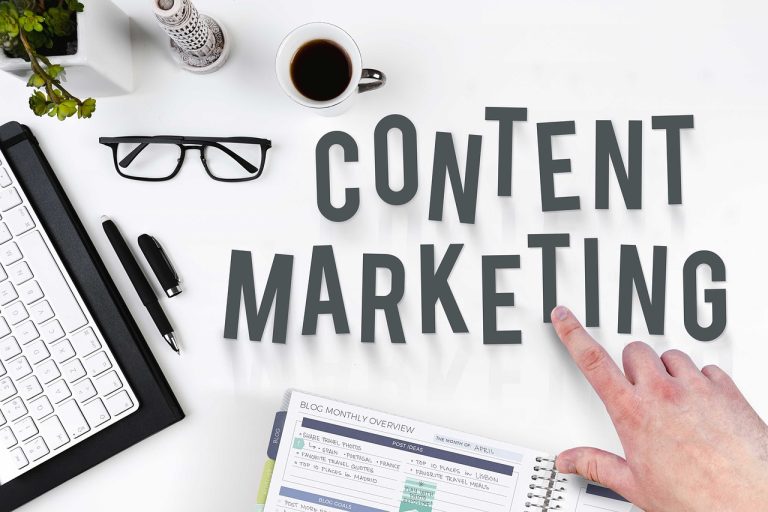They get people to act with just one glance, one story, or one discount code. No fancy campaigns. No million-dollar budgets. Just trust – and timing. While many companies are still struggling to get noticed, influencers have already cracked the code. In less than 24 hours, one profile can sell out a product without spending a single penny on ads. It’s easy to think their success is just about luck, filters, or looks. But what looks effortless on screen is often the result of strategy, strong business sense – and a razor-sharp understanding of both algorithms and people. You have two choices: Learn from them – or hire them.
While writing the article series “How to Succeed with Blogging and Content in 2025” (currently available in Norwegian Language only), I couldn’t help but think about those who have already mastered the game. Those who communicate, engage, and sell as naturally as drinking a glass of water – not launching a marketing campaign.
How is the collaboration set up?
It all starts with an idea – either from the company itself or through an agency. You want to promote a product, service, or message and are looking for a credible voice that can reach your target audience in an authentic way.
A collaboration can be set up in several ways:
- Direct contact between the company and the influencer (typical for smaller brands)
- Through influencer agencies or platforms that connect advertisers with relevant profiles
- Via media agencies that manage the entire campaign, including ads and distribution
How do you choose the right influencer?
Choosing the right influencer isn’t just about follower numbers – it’s about the right match. A good profile needs to align with the target audience, values, and credibility. Hundreds of thousands of followers won’t help if engagement is low or if the message falls flat.
Often, it’s better to work with a smaller profile that speaks directly to the right niche than a famous figure speaking to “everyone.” An influencer passionate about makeup will likely promote a cosmetic product more authentically than a carpenter – and vice versa. It’s all about authenticity and expertise in what’s being communicated.
That’s why brands look at factors like:
- Relevance – Does the audience and values match?
- Engagement – Do people comment, or just scroll past?
- Content style – Does it feel genuine, or just like an ad?
- Previous collaborations – Has the profile done similar campaigns before?
Many companies use their own analytics tools or platforms to gain insights into audience data, engagement rates, and growth patterns. But if you’re unsure who fits your product, don’t worry – help is available.
Different platforms and agencies
Getting in touch with an influencer can be easier said than done. Especially the most popular ones.
Some list contact information on their websites or blogs, often with a brief overview of what they offer and what kinds of collaborations they are open to. But in many cases, you’ll only reach them through their management or agency. The bigger the profile, the more likely you’ll need to go through an agency or management team to get a response.
Most major influencers have a small team around them – often with people helping with content production, campaign coordination, and contracts. That’s why an agency can be both a door-opener and an advisor. If you call any influencer or media agency, they can often point you in the right direction – whether it’s who you should talk to, or who you should avoid.
Several Norwegian players make this process easier. Inzpire.me is a Norwegian platform that connects brands with relevant profiles and provides insights into both campaigns and results. International platforms like Skeepers and Meltwater also offer solutions with Norwegian support.
Among the agencies, you’ll find Max Social, United Influencers, Egmont People, and Splay, all operating in the Norwegian market and representing profiles across everything from fashion and gaming to tech and sustainability. Many of them can also assist with strategy, idea development, content, and distribution – not just making contact.
What do influencers get paid?
What an influencer earns varies greatly – and often has more to do with their influence than their number of followers. It’s not necessarily those with the biggest audience who deliver the best results. A profile with lower reach but high credibility and a close relationship with their followers can generate far better results than a celebrity with hundreds of thousands of passive followers.
Many micro-influencers – typically those with around 5,000 to 20,000 followers – are compensated with products, gifts, or a symbolic fee. For mid-sized profiles and up, it’s more common to pay a fixed amount per post or story, often combined with commission based on sales through discount codes or tracking links. The biggest influencers – those with 100,000, 200,000, or even 400,000 followers or more – usually have much higher rates and often sign long-term ambassador agreements. These deals often include exclusivity, meaning the influencer agrees not to collaborate with competing brands in the same category.
As a very rough guideline, a profile with around 10,000 followers can charge anywhere from 1,000 to 10,000 NOK per post, depending on industry, engagement, and platform. For top influencers, the fees can be many times higher – especially if video content or extensive campaign production is involved.
And yes, there are clear rules for labeling sponsored content – but that’s not our focus here. This is about strategy, not legalities. The most important thing to remember, both for you and the influencer, is to build and maintain trust. Failing to label content properly can lead to warnings, fines, and a reputational hit that neither of you want. In the world of influencers, credibility might just be your most valuable asset – whether you’re selling products or building a personal brand.
KPIs and measuring success
What should you measure, and how do you know if the campaign “worked”? Typical KPIs (key performance indicators) include:
- Reach and views
- Engagement (likes, comments, shares)
- Swipe-ups, clicks, or discount code usage
- Sales or leads
- Brand lift or awareness studies
Some platforms offer advanced tracking, while other campaigns measure success more qualitatively – for example, by analyzing mentions or increased dialogue in the comments.
The rise of nano-influencers
There’s a growing trend where brands are focusing more on small, but powerful profiles. Nano-influencers – those with fewer but highly engaged followers – have a unique ability to build real relationships and trust.
When they recommend a product, it often feels more genuine than when bigger profiles do. Plus, the risk is lower: collaboration costs are usually much more manageable, and you can test several profiles at once to see what works best.
Summary
Influencer marketing isn’t just glossy photos and discount codes. It’s a blend of strategy, psychology, and communication. When it hits the mark, it can be pure gold. But when it misses, it can be both embarrassing, expensive – and potentially damaging to your brand.
For a campaign to succeed, the message must not only reach the audience – it must also resonate with the influencer themselves. The most effective collaborations happen when the product or service feels natural to promote and fits seamlessly into the influencer’s established profile. Many influencers have spent years building a credible universe, and one misstep can cost them dearly – and you even more.
If you’re going to work with influencers, you need to know what you’re doing – and who you’re doing it with. Choosing the right profile is about more than follower numbers. It’s about credibility, target audience, and a natural connection between the message and the person.
And remember: An influencer isn’t just an ad space you buy. It’s a person with an audience they’ve built over time, based on personality, trust, and consistency. That’s why your pitch needs to be good too. Give them something they can genuinely believe in and share with enthusiasm. That’s when it really works.
Agencies and platforms can help you find the right match. If they don’t have the perfect fit for you, they can often refer you to someone else – saving you time, money, and potentially a major reputation hit.


